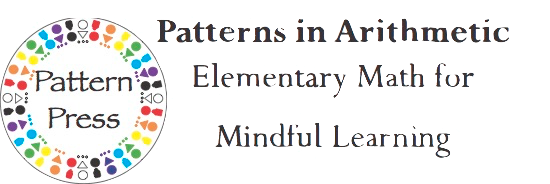
Farm School Math Notes by Prof. Michael Butler

Creative Learning in Children - Undergraduate class taught at UC Irvine
A. Some things students and teacher should be doing routinely:
1. Inventing problems: For practice and self-teaching. For other people, including the teacher. As puzzles; to give and get pleasure. To show understanding of a principle. To link math to the world. To stretch creative power. To develop mathematical taste.
2. Finding patterns: In numbers, shapes, etc. Find the rule; 'black box.' Math or formal patterns in worldly stuff--motion, people, plants, cars, stars. 'Getting' a puzzle.
3. Giving plausible answers and why: Estimation/prediction/plausible guessing. Error bounds. Recognizing that some estimates are better than others. Iteration to improve estimates. Quickly inventing problems whose answers are 'about' such-and-such--e.g., between m and n. Believing that answers ought to make sense.
4. Learning about and using heuristics: Make a picture. Bookkeeping and, in general, 'cases.' Reduction to absurdity. If then. Plausible reasoning. Find a solution for simpler numbers, for a simpler case. Get some result; change it. What's a problem like this? What have I got so far?
5. Learning about and using kinds of relations: The more the more, the more the much more, etc. Plots; worldly cases. 'Variable' thinking. 'Control' -- 'other things being equal.' Refining explanations ['true for boys but not girls'] in terms of variables.
6. Exploring the big ideas: Scale. Symmetry. Congruence. Ratio. Equivalence. Measurement. Teacher alertness to these in anything.
B. Meta-skills for good mathematicians and students of mathematics:
--the 'understanding' loop: They know when they understand and when they don't, and they keep at it until they do.
--the 'conjecture and test' loop: They sense when something can be generalized and press to the limit of their ability to do so.
That children can do these things is one big test of the teacher's success.
C. The other is:
Children like working with numbers, 'thinking stuff'–as shown in their spontaneously choosing to do math and thinking stuff, visibly enjoying it, being absorbed in it, and not saying, "I don't want to do it, this is icky," etc.
They can do it.
They do do it.
